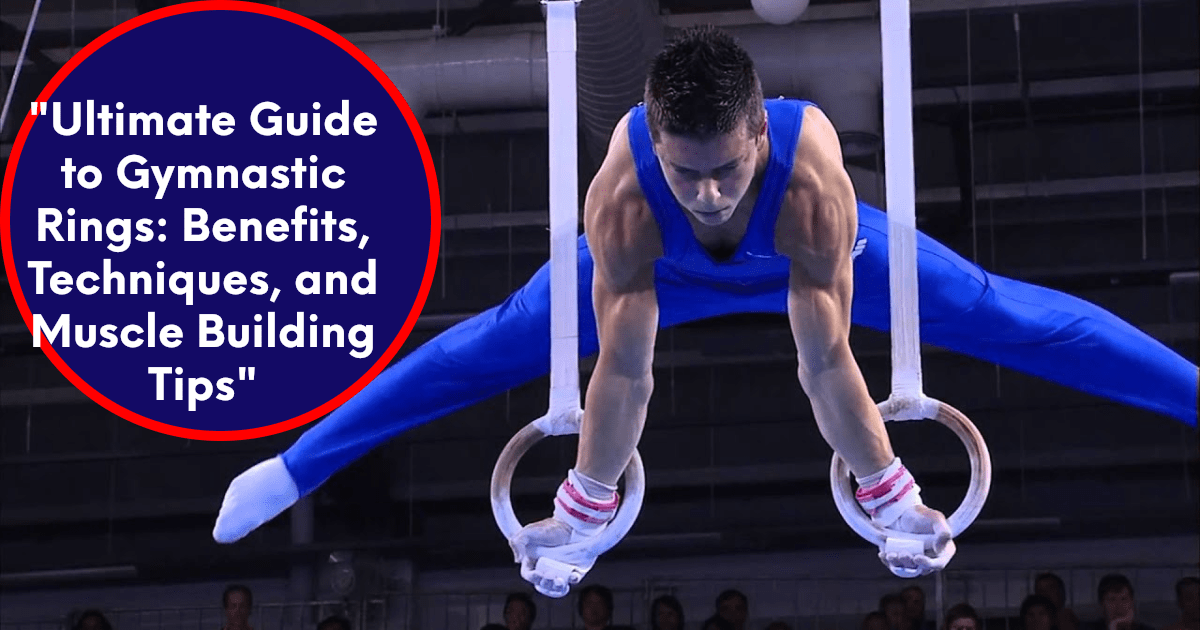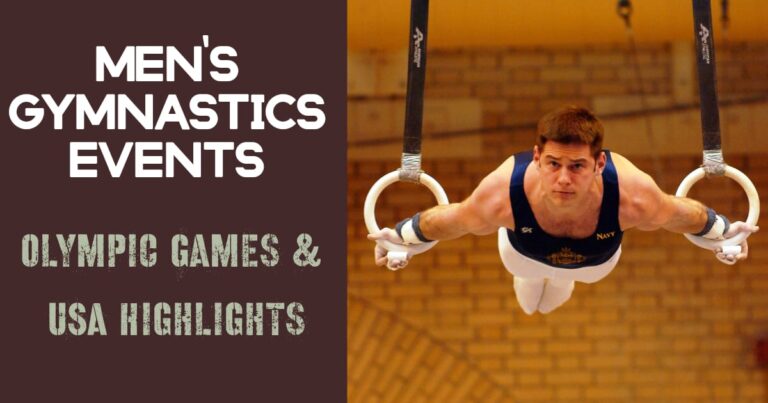Gymnastic rings, once reserved for Olympic gymnasts, have made a significant impact in the world of fitness, becoming a favorite tool for athletes and enthusiasts across the United States. Known for their ability to challenge even the most seasoned workout warriors, gymnastic rings offer unparalleled benefits for strength, flexibility, and overall fitness. In this comprehensive guide, we’ll explore the history, benefits, techniques, and tips for integrating gymnastic rings into your fitness routine.
1. What Are Gymnastic Rings?
Gymnastic rings are two circular apparatuses made from wood or metal, suspended from adjustable straps. These rings are used in a variety of exercises that require exceptional strength, balance, and stability. Originating from Olympic gymnastics, they have now become a staple in functional training and bodyweight workouts.
2. The Rise of Gymnastic Rings in the U.S. Fitness Scene
In recent years, gymnastic rings have gained traction in the U.S. fitness community due to their versatility and effectiveness. Fitness influencers, personal trainers, and athletes have embraced them for their ability to enhance strength and coordination. The rings are particularly popular in functional training, CrossFit, and calisthenics, where their ability to engage multiple muscle groups and improve core stability is highly valued.
3. Benefits of Using Gymnastic Rings
3.1. Comprehensive Strength Development
Gymnastic rings provide a full-body workout that engages your upper body, core, and lower body. Exercises such as ring pull-ups, muscle-ups, and ring dips require significant muscle activation, helping to build strength and muscle mass.
3.2. Improved Core Stability
Training on gymnastic rings challenges your core like no other equipment. The instability forces your core muscles to work harder to stabilize your body, leading to improved balance and control.
3.3. Enhanced Flexibility and Mobility
Ring exercises often involve dynamic movements and deep stretches that enhance flexibility. For example, exercises like ring support holds and ring flyes can improve shoulder and wrist mobility.
3.4. Functional Strength Development
The functional nature of ring exercises mimics real-world movements, improving your overall functional strength. This translates into better performance in sports and daily activities, from lifting heavy objects to performing agile movements.
3.5. Injury Prevention and Rehabilitation
The instability of the rings engages stabilizing muscles that are often neglected with traditional weight training. This can help prevent injuries and is also beneficial for rehabilitation, allowing for controlled bodyweight exercises that can be customized to individual needs.
4. Essential Techniques and Exercises
4.1. Setting Up Your Gymnastic Rings
Before diving into exercises, proper setup is crucial. Mount your rings securely and adjust the straps to a height where you can perform exercises without your feet touching the ground. Ensure the rings are evenly aligned and stable to avoid any accidents.
4.2. Foundational Exercises
- Ring Push-Ups: A challenging variation of the push-up that targets the chest, triceps, and shoulders.
- How-To: Start in a push-up position with your hands on the rings. Lower your chest towards the rings, then push back up to the starting position.
- Ring Rows: Strengthen your back and biceps with this effective horizontal pulling exercise.
- How-To: Hang from the rings with your body in a straight line. Pull your chest towards the rings, then lower yourself back down.
- Ring Dips: A powerful exercise for the triceps, chest, and shoulders.
- How-To: Begin with your arms fully extended on the rings. Lower your body until your upper arms are parallel to the ground, then push yourself back up.
- Ring Support Hold: Build shoulder stability and core strength by holding your body in an extended position.
- How-To: Hold yourself up on the rings with your arms fully extended and body in a straight line. Engage your shoulders and core to maintain the position.
4.3. Intermediate Exercises
- Ring Muscle-Ups: A combination of a pull-up and dip, this advanced exercise requires strength and technique.
- How-To: Perform a pull-up on the rings, then transition smoothly into a dip at the top. This move requires explosive power and coordination.
- Ring L-Sit: Develop core strength and flexibility with this static hold.
- How-To: Hang from the rings with your legs extended straight out in front of you. Hold this position as long as possible, keeping your core engaged.
- Ring Flyes: Target your chest and shoulders with this advanced exercise.
- How-To: Start in a push-up position on the rings. Slowly lower your arms out to the sides, then bring them back together.
4.4. Advanced Exercises
- Ring Planche: A demanding hold that requires exceptional shoulder strength and balance.
- How-To: Support yourself on the rings with your body parallel to the ground. Engage your shoulders and core to maintain this challenging position.
- Ring Front Lever: Build core and back strength with this dynamic exercise.
- How-To: Hang from the rings with your body extended horizontally. Keep your core tight and control the movement.
- Ring Iron Cross: A display of advanced strength and stability.
- How-To: Hold yourself on the rings with your arms extended out to the sides. This requires exceptional shoulder and core strength.
5. Tips for Successful Ring Training
5.1. Start with Basics
Begin with basic exercises to build a strong foundation before progressing to advanced movements. Mastering fundamental techniques ensures safety and effectiveness.
5.2. Focus on Proper Form
Maintaining correct form is crucial to avoid injuries and achieve optimal results. Pay attention to your technique and make adjustments as needed.
5.3. Incorporate Mobility Work
Regular stretching and mobility exercises are essential for improving flexibility and preventing injuries. Include these in your routine to enhance your performance on the rings.
5.4. Use Progressions
Break down complex exercises into smaller progressions to build strength and technique gradually. For instance, practice ring push-ups before attempting ring dips.
5.5. Stay Consistent
Consistency is key to progress. Incorporate ring training into your fitness routine and stay dedicated to your goals.
5.6. Listen to Your Body
Pay attention to any signs of discomfort or pain. Rest and recovery are important aspects of a successful training regimen.
6. Crafting Your Ring Training Routine
6.1. Warm-Up
Start your workout with a proper warm-up to prepare your muscles and joints. Include dynamic stretches and light cardio to get your blood flowing.
6.2. Strength Training
Combine foundational, intermediate, and advanced exercises in your routine. This mix will target various muscle groups and ensure balanced development.
6.3. Skill Practice
Dedicate time to practicing specific skills and techniques. Focus on progressions and gradually increase the difficulty of your exercises.
6.4. Cool Down
End your workout with a cool-down period. Incorporate static stretching to promote flexibility and aid in recovery.
7. Conclusion
Gymnastic rings are a powerful addition to any fitness routine, offering a unique challenge that enhances strength, flexibility, and overall physical fitness. Whether you’re a beginner or an experienced athlete, incorporating rings into your training can lead to impressive results. Embrace the challenge, stay dedicated, and enjoy the journey to mastering your ring skills. With consistency and proper technique, you’ll unlock new levels of strength and control, making gymnastic rings a valuable tool in your fitness arsenal.
FAQ
What are the gymnastic rings called?
What is standard gymnastic ring size?
Why don’t female gymnasts do rings?
Are gymnastic rings better than pull up bar?
Gymnastic Rings: Provide a greater challenge due to their instability, which engages more stabilizing muscles and offers a wider variety of exercises. They enhance overall strength, stability, and flexibility.
Pull-Up Bar: Offers a more stable platform, making it easier to focus on building upper body strength, particularly in the back and biceps. It’s often simpler to use for beginners.
The choice depends on your fitness goals and preferences. Rings are more versatile and challenging, while pull-up bars are straightforward and effective for building strength.
Are gymnastic rings better than weights?
Gymnastic Rings: Improve body control, stability, and overall functional strength. They engage multiple muscle groups and enhance flexibility and balance through bodyweight exercises.
Weights: Allow for precise control over resistance and target specific muscle groups. They are effective for building muscle mass and strength, especially when performing progressive overload.
Choosing between rings and weights depends on your goals. Rings offer a bodyweight approach with functional benefits, while weights provide targeted strength training and muscle growth. Many people find incorporating both into their routine provides the best results.




